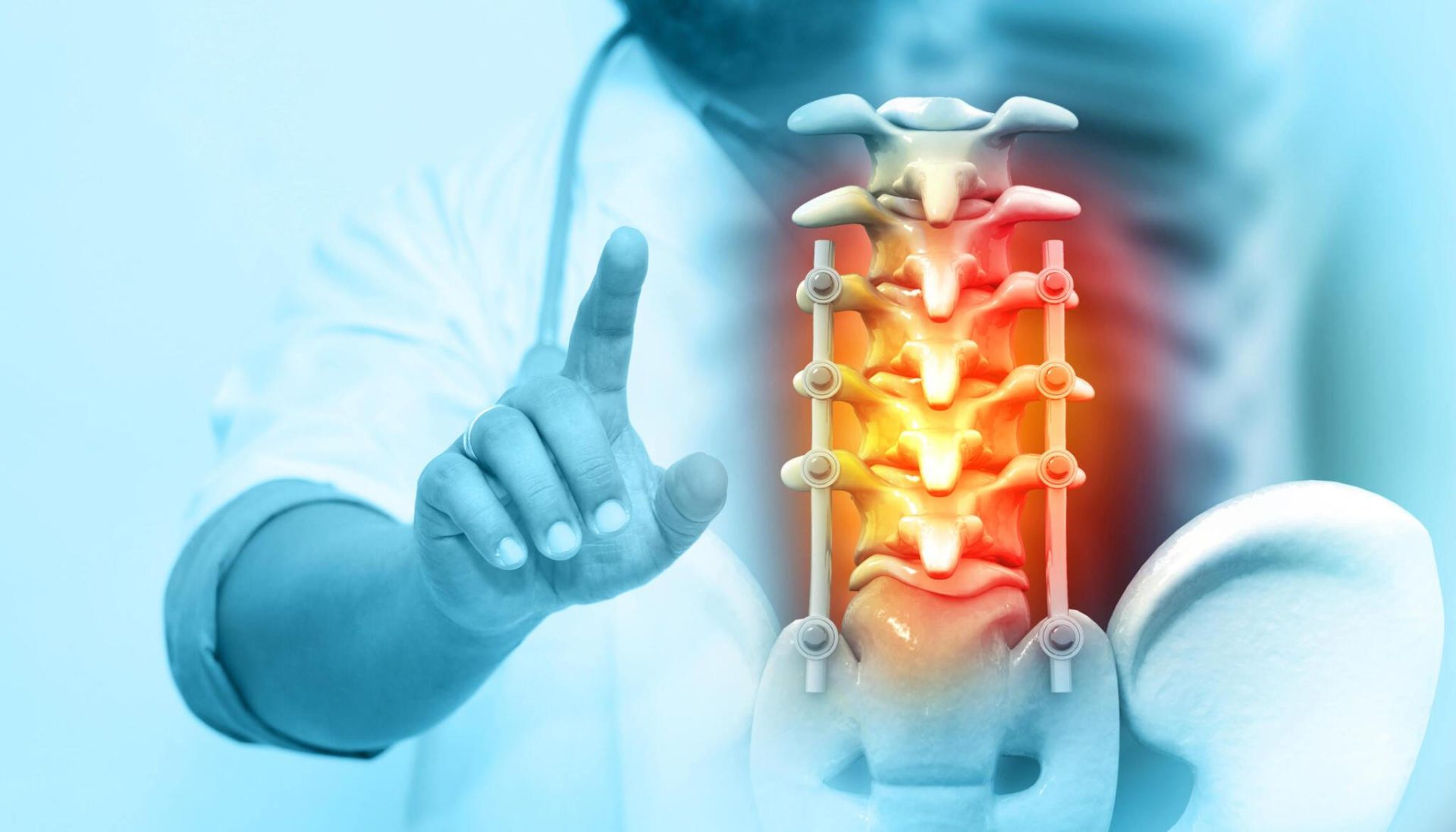Stem Cell Therapy: A Non-surgical Alternative To Spinal Stenosis
The spine of the human body is responsible for providing structural support, maintaining balance, and helping you walk, move, or twist. It comprises a series of vertebrae (bones), invertebrae discs, soft tissues, joints, and nerves, connecting various parts of the musculoskeletal system. Any injury or damage to the spine can impact the roots of the nerves connecting your internal organs and body parts. This condition is medically termed spinal stenosis.
Stem cell therapy for spinal stenosis is a revolutionary treatment approach that aims to reduce pain, weakness, and numbness by healing the diseased tissue and regenerating healthy tissues. This article will explore the therapeutic potential of cutting-edge stem cell treatment for spinal stenosis.
Table of Contents
- Overview of Spinal Stenosis
- Will Stem Cell Therapy Help Treating Spinal Stenosis?
- Why To Choose Stem Cell Therapy For Spinal Stenosis Treatment?
- Results To Expect After Stem Cell Therapy For Spinal Stenosis
- Success Rates Of Stem Cell Therapy For Spinal Stenosis
- Future Scope And Challenges of Stem Cell Therapy For Spinal Stenosis
- Best Institute Of Stem Cell Therapy For Spinal Stenosis
Overview of Spinal Stenosis
Spinal stenosis is a medical condition where the spinal canal narrows, leading to increased nerve roots and spinal cord pressure. It can be classified into two types depending on the part of the occurrence in the spine.
- Cervical Stenosis – Any degenerative changes or damage in the part of the spine in the neck leads to cervical stenosis.
- Lumbar Stenosis – This condition occurs in the lower back, where the spaces in the spinal canal are in the lower region.
The symptoms vary among individuals depending on the part of the spine affected, the extent of the damage, and the types of nerve damage. In most cases, the common symptoms of spinal stenosis include –
- Intermittent or consistent pain in the back or neck.
- Weakness, tingling sensation, and numbness in the arms or legs.
- Difficulty walking or balancing caused by excess pressure on the spinal cord.
- Lack of steadiness while bending or turning.
- Severe cases of cervical spinal stenosis can lead to bowel dysfunction or lack of control over bladder movements.
Various factors are considered potential causes or triggering elements of spinal stenosis, including herniated discs, age-induced wear and tear, spinal cord injuries, and ligament thickening around the spine.
Read Also: Can Stem Cell Therapy Provide Relief From Chronic Knee Pain?
Does Stem Cell Therapy Help In Treating Spinal Stenosis?
Traditional treatments for spinal stenosis include pain medicines, antidepressants, and anti-seizure medicines to ease the debilitating pain caused by damaged nerves. Many healthcare providers recommend steroid injections to suppress inflammation and alleviate pain. However, these conservative treatment approaches can provide relief and comfort up to a specific condition, after which the symptoms recur.
Stem cell-based treatment is a non-surgical intervention where specialized stem cells are introduced into the body to heal the damaged tissues in the affected spine areas. There are various sources from which stem cells are extracted for the therapy, such as bone marrow, adipose or fat tissue in the abdomen, hip bone, and umbilical cord tissue. They are immature multipotent cells that can reproduce and differentiate into specialized cell types to treat diseased tissues in specific organs or parts.
Stem cells treat spinal stenosis in the following ways:
- Tissue Regeneration – Stem cells, when delivered to the injured part of the spinal canal, replace and repair damaged tissues, promoting tissue regeneration.
- Anti-inflammatory properties – Mesenchymal stem cells possess anti-inflammatory properties that further help reduce inflammation and pain in the spinal cord, eliminating muscle weakness.
- Neurotrophic factors – Stem cells stimulate the growth of neurotrophins, which influence the formation of new nerve endings, neural cell survival, and sensory neuron functioning.
Isolated and concentrated mesenchymal stem cells (MSCs) derived from human umbilical cord tissue are used in treating spinal stenosis to delay or slow the progression of the symptoms. MSCs have remarkable regenerative characteristics that boost the production of healthy stem cells, enabling the body to repair on its own through cell regeneration. Medical professionals and scientists worldwide use stem cells’ specialized qualities to treat spinal stenosis successfully.
Why To Choose Stem Cell Therapy For Spinal Stenosis Treatment?
Regenerative medicine treatment is the best non-surgical alternative to treat conditions associated with spinal cord injury or damage, such as spinal stenosis, herniated discs, degenerative disc disease, vertebral fractures, etc.
The incredible benefits that human umbilical cord tissue-derived mesenchymal stem cells (HUCT-MSCs) in curing spinal stenosis are –
- Non-invasive and non-surgical procedure – Stem cells are administered intravenously and travel through the bloodstream to reach the impacted region in the spine and start the healing process.
- Healing at a cellular level – Stem cell intervention is a treatment that occurs at the cellular level. The newly introduced stem cells reach the affected area, repair and regenerate damaged tissues, and also act on the surrounding cells to stimulate the growth of new and healthy cells.
- Cost-effective treatment – Compared to surgical procedures, stem cell therapy is less expensive and has no additional expenses, such as anesthetic investigations, post-surgery medications, and the cost of caregiver support. Stem cell therapy costs depend on the types of stem cells used and the total number of doses.
- Long-term relief – Stem cell therapy offers lasting results by repairing worn-out spinal tissues and promoting cell renewal and regeneration in the affected spine region.
Results To Expect After Stem Cell Therapy For Spinal Stenosis
Although the entire stem cell procedure is simple and less time-consuming, many patients have questions like “Is the recovery period difficult?”. The answer is – Not at all! The recovery period for stem cell therapy for spinal stenosis.
You do not need to wait for months to see positive results. Most patients experience visible improvements nearly three to four weeks after receiving stem cells.
- There is a steady reduction in the pain in the back.
- Patients regain muscle strength and stability, and difficulties in walking and balancing are not seen anymore.
- The tingling sensation or numbness in the arms or legs is reduced.
- There is improved strength and steadiness while bending or turning.
- Better bowel and bladder control.
Success Rates Of Stem Cell Therapy For Spinal Stenosis
The overall success rate for stem cell treatment for spinal stenosis is around 80%. A clinical study 2017 on stem cell therapy using bone marrow-derived cells indicates a 70% reduction in pain one year after the treatment. Another 2020 study reported that cell-based regenerative medicines resulted in a 60% improvement in the functioning of the spinal cord.
However, patients need to understand that the effectiveness and success rates of the therapy depend on several factors, including –
- Severity of the spinal stenosis condition
- Location of the stenosis in the spine
- Patient’s medical history and pre-existing conditions
- Types and sources of stem cells used in the therapy
Read Also: Healing Power Of Stem Cell Therapy: A Comprehensive Guide
Future Scope And Challenges of Stem Cell Therapy For Spinal Stenosis
Although stem cell research and treatment approaches have come a long way over the past few decades, more work is still needed to uncover the potential of stem cells to the fullest. Specific challenges still exist that researchers and clinicians need to overcome.
The future looks promising as more and more applications of stem cells are being unveiled. They potentially can treat diabetes, heart disease, Parkinson’s disease, Alzheimer’s disease, Multiple sclerosis, and other critical health conditions. Primary research and studies have progressed in recent years, leading to new far-reaching therapeutic potential.
Best Institute Of Stem Cell Therapy For Spinal Stenosis
Life Altering Stem Cell Therapy Institute, a renowned clinic for stem cell therapy in Mexico, has earned the trust of millions with its cutting-edge treatments and state-of-the-art facilities. Their experienced doctors and stem cell specialists have more than 20+ years of expertise and hands-on experience in administering stem cells to patients suffering from various medical conditions, including spinal stenosis.
If you are interested in stem cell treatment and want to know whether you are a suitable candidate for stem cell therapy, contact us to schedule a one-to-one consultation with our health advocate, Doctor Josemaria Torres Farber.
Wrapping Up
Stem cell therapy is a pathbreaking healthcare innovation capable of transforming the lives of individuals suffering from chronic pain and life-impacting diseases. Degenerative disc diseases and spinal stenosis affect nearly 20% of the older adults in the US who are 60 years or above.
Stem cell therapy offers them a novel hope to get rid of the debilitating pain, immobility, and lack of strength in the spinal cord. It halts the progression of the spinal stenosis symptoms and shields the surrounding cells from getting damaged. Cellular therapy reduces inflammation and repairs the damaged tissues by triggering the body’s natural healing mechanism and targeting the root cause of the pain.
Without thinking further, connect with the stem cell therapy best hospital in Mexico and say goodbye to chronic pain in the spinal cord forever.

